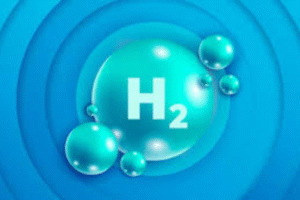Facial Abuse in Skincare: Identifying and Preventing Harmful Practices for Healthy Skin
In the quest for radiant, youthful skin, many of us unknowingly subject our faces to practices and products that can cause harm rather than help. This phenomenon, often referred to as “facial abuse,” encompasses the overuse of harsh treatments, improper product application, or neglect of essential skincare practices. This article delves into the concept of facial abuse in skincare, its causes, consequences, and ways to achieve a healthy skincare routine while avoiding potential damage.
Understanding Facial Abuse in Skincare
Facial abuse refers to skincare habits or treatments that lead to irritation, inflammation, or long-term damage to the delicate facial skin. While the intent may be to improve one’s appearance, the misuse of products or treatments can disrupt the skin barrier and cause more harm than good.
Common Causes of Facial Abuse
Over-Exfoliation
Exfoliation is a key step in removing dead skin cells and revealing a brighter complexion. However, overdoing it—especially with harsh physical scrubs or potent chemical exfoliants—can strip the skin of its natural oils, leading to dryness, irritation, and sensitivity.
Using Harsh Ingredients
Many skincare products contain active ingredients like retinoids, acids, or alcohol. While these ingredients can be beneficial when used correctly, excessive or improper use can cause redness, peeling, and inflammation.
Skipping Sunscreen
Neglecting to wear sunscreen is one of the most common forms of facial abuse. Sun exposure without protection can accelerate aging, cause hyperpigmentation, and increase the risk of skin cancer.
Layering Too Many Products
The growing popularity of multi-step skincare routines has led many to overload their skin with products. Using incompatible or excessive products can disrupt the skin’s natural balance, causing irritation or breakouts.
Aggressive Treatments
Procedures like microneedling, chemical peels, and laser treatments can be effective, but overuse or improper application can lead to scarring, discoloration, and sensitivity.
Signs of Facial Abuse
Facial abuse often manifests in visible signs of skin distress, including:
- Persistent redness or irritation.
- Dryness and flaking.
- Increased sensitivity to products or environmental factors.
- Breakouts or clogged pores.
- Uneven skin tone or texture.
If you notice these signs, it may be time to reassess your skincare habits and adopt a gentler approach.
Preventing Facial Abuse: Skincare Best Practices
Adopt a Minimalist Approach
Less is often more when it comes to skincare. Focus on a few essential steps: cleansing, moisturizing, and protecting your skin with sunscreen. Avoid using unnecessary products that may overwhelm your skin.
Use Gentle Cleansers
Opt for cleansers that are free from sulfates and harsh chemicals. These will clean your skin without stripping away its natural oils.
Limit Exfoliation
Exfoliate only 1-2 times a week, and choose a method that suits your skin type. For sensitive skin, opt for enzyme-based or mild chemical exfoliants.
Patch Test New Products
Before introducing a new product to your routine, patch test it on a small area of your skin to check for any adverse reactions.
Prioritize Sunscreen
Daily sunscreen application is non-negotiable. Use a broad-spectrum SPF 30 or higher to protect your skin from harmful UV rays.
Hydrate and Repair
Look for products with hydrating and barrier-repairing ingredients like hyaluronic acid, ceramides, and glycerin. These help restore and maintain your skin’s natural barrier.
Seek Professional Guidance
For treatments like chemical peels or lasers, consult a licensed dermatologist or aesthetician to ensure safe and effective results.
Gentle Alternatives to Aggressive Treatments
If you’re seeking results without risking facial abuse, consider these gentler alternatives:
At-Home Masks
Hydrating and calming masks with ingredients like aloe vera or oatmeal can provide a soothing boost without irritation.
LED Therapy
Low-level light therapy can improve skin tone and reduce acne without the risks associated with invasive treatments.
Niacinamide Serums
Niacinamide is a versatile ingredient that calms inflammation, improves texture, and strengthens the skin barrier.
Facial Massages
Regular massages with facial oils can enhance circulation and promote a healthy glow without damaging the skin.
Repairing Damage from Facial Abuse
If your skin has already suffered from harsh practices, it’s not too late to repair the damage.
Simplify Your Routine
Pare back your routine to only the essentials: a gentle cleanser, a hydrating moisturizer, and sunscreen.
Incorporate Healing Ingredients
Look for products containing soothing ingredients like panthenol, aloe vera, and centella asiatica to calm irritation and support skin repair.
Take a Break from Actives
Pause the use of strong actives like retinoids or acids to allow your skin to recover.
Stay Hydrated
Hydrate your skin from the inside out by drinking plenty of water and using hydrating skincare products.
Consult a Dermatologist
For persistent issues, seek professional advice to develop a tailored recovery plan.
The Long-Term Impact of Avoiding Facial Abuse
Adopting a mindful approach to skincare not only prevents immediate damage but also ensures long-term skin health. By treating your skin with care and respecting its natural balance, you can achieve a radiant, youthful complexion that lasts.
Conclusion
Facial abuse in skincare is a common but preventable issue. By understanding the causes, recognizing the signs, and adopting a gentle skincare routine, you can protect your skin from unnecessary harm and enhance its natural beauty. Remember, skincare is a journey, not a race—prioritize patience, consistency, and care for truly healthy skin.
Unlock premium guest posting opportunities to boost your brand at GuestDraz.com.














Post Comment